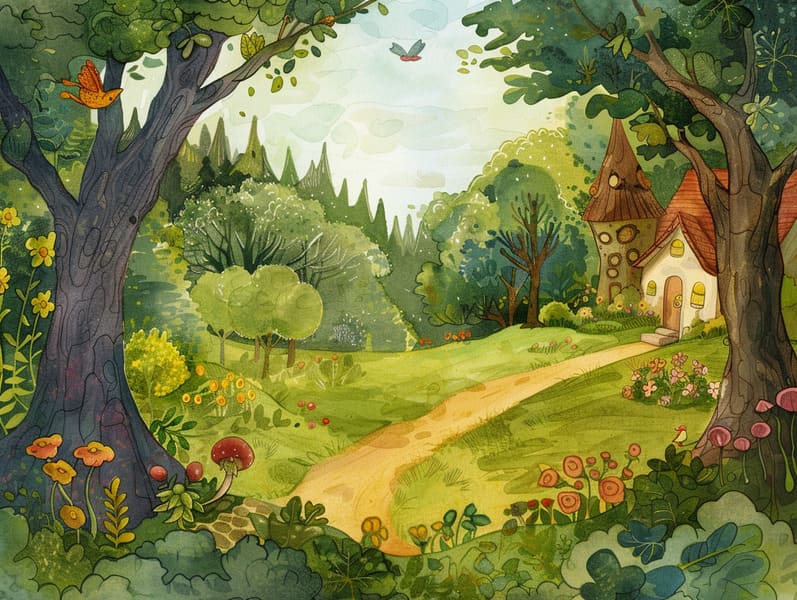The Journey of Children's Fairy Tales and Their Ageless Allure.
The Journey of Children's Fairy Tales and Their Ageless Allure.
Blog Article

Short fairy tales have historical significance. These stories have been relayed from one generation to the next long before they were ever transcribed. They originated from a variety of civilizations, including Asian traditions. They were initially told among adults, often carrying themes and messages reflective of the societal norms and beliefs of the time.
The famous Grimm duo, the two Grimm brothers, were among the first to collect many of these beloved stories. Their published works, "Grimm's Fairy Tales," included tales like "The True Bride," "Little Brother and Little Sister," and "The True Story of Snow White," which have since become cornerstones in the world of timeless fairy tales. Similarly, H. C. Andersen's fantastical narratives, such as "The Story of the Little Mermaid," and "The Story of the Ugly Duckling," have enchanted hearts worldwide, ensuring their place in the pantheon of iconic fairy tales.
Even though they are old, traditional fairy tales remain as important as ever, especially as children's bedtime stories. These enchanting tales are now available in multiple formats, including gorgeously illustrated books, charming animations, and digital fairy tales.
Their enduring popularity can be ascribed to several captivating elements:
Life Lessons: Ancient fairy tales often teach important moral lessons. Narratives like "The Story of the Boy Who Cried Wolf" teach the virtue of being truthful, while "The Race of the Tortoise and the Hare" stress the qualities of steadfastness and unassuming nature. These stories offer little ones clear distinctions between truth and falsehood, guiding their moral compass in a kind yet significant way.
Kindness and Comprehension: Classic fairy tales frequently showcase figures facing struggles and tests, fostering young readers to connect with their struggles and celebrate their triumphs. For instance, "Beauty's Beast" demonstrates the benefit of looking deeper to know the real character of a character, strengthening empathy and awareness.
Cultural Understanding: Many ancient fairy tales are steeped in the cultural contexts from which they emerged. Engaging with these tales can provide illuminating insights into different historical contexts, fostering a sense of global insight and knowledge.
Imagination and Creativity: The fantastical elements in timeless fairy tales—magical kingdoms—fuel children’s imaginative ideas. These tales guide readers to fantasy realms, encouraging inventive ideas and a sense of mystery that remains a lifetime.
Classic fairy tales are not only delightful but also educational. They work as charming tools in cultivating various intellectual and emotional capacities in children. When old fairy tales are narrated, they enhance verbal development by introducing new vocabulary and intricate sentence structures. This practice also advances hearing abilities and attention span, as children pay close attention, prepared to see what happens next.
Furthermore, talking about the themes and characters of fairy tales can sharpen thinking skills and cognitive skills. The young are taught to pinpoint patterns, expect results, and catch on to cause and effect. These analyses also ease young readers utter their thoughts and feelings, boosting their emotional intelligence.
In today’s technological era, the proliferation of digital storybooks has made these fairy tales more reachable than ever. Internet sites and web apps make available huge assortments of timeless fairy tales that can be read or listened on anytime, anywhere. Fairy tales voiced are particularly well-received, providing an captivating way for the young to enjoy these fantastical tales. Sound books and spoken videos carry characters and settings to life, often accompanied by enchanting melodies and music that elevate the story adventure.
The timeless appeal of ancient fairy tales lies in their ability to adjust to the present while keeping their key morals. Contemporary revisions of these tales often present more different characters and modern settings, making them understandable to today’s audience. However, the underlying themes of fortitude, warmth, and even-handedness remain unchanged, continuing to impact children of all ages.
Classic fairy tales also offer a sense of calm and familiarity. They afford a tidy narrative with a apparent beginning, middle, and end, often winding up with the ending of conflicts and the triumph of truth over falsehood. This reliability can be reassuring for the young, imparting a sense of sturdiness in an dynamic world.
Old fairy tales continue to enthrall and guide new generations, maintaining their charm and pertinence in modern society. As nighttime stories for kids, they bequeath a perfect blend of enchantment and education, fostering moral values, empathy, and creativity. The proliferation read more of web-based fairy tales and the sought after status of fairy tales recited guarantee that these ancient tales remain reachable to new generations.
By defending and conveying these tales, we continue to appreciate the rich tapestry of folklore and cultural heritage. Whether you are enjoying a gorgeously illustrated book, browsing a virtual collection, or listening to an spoken story, the wonder of popular fairy tales is always within reach. These tales demonstrate of the everlasting effect of fairy tales and its ability to bring us together across centuries and lands.
Even if you are accessing a beautifully illustrated book, seeing a electronic library, or hearing an narrated book, the enchantment of children's fairy tales is always within reach.
These narratives emphasize of the ageless force of stories and its ability to bond us across centuries and lands, forging a link that captivates and teaches alike.